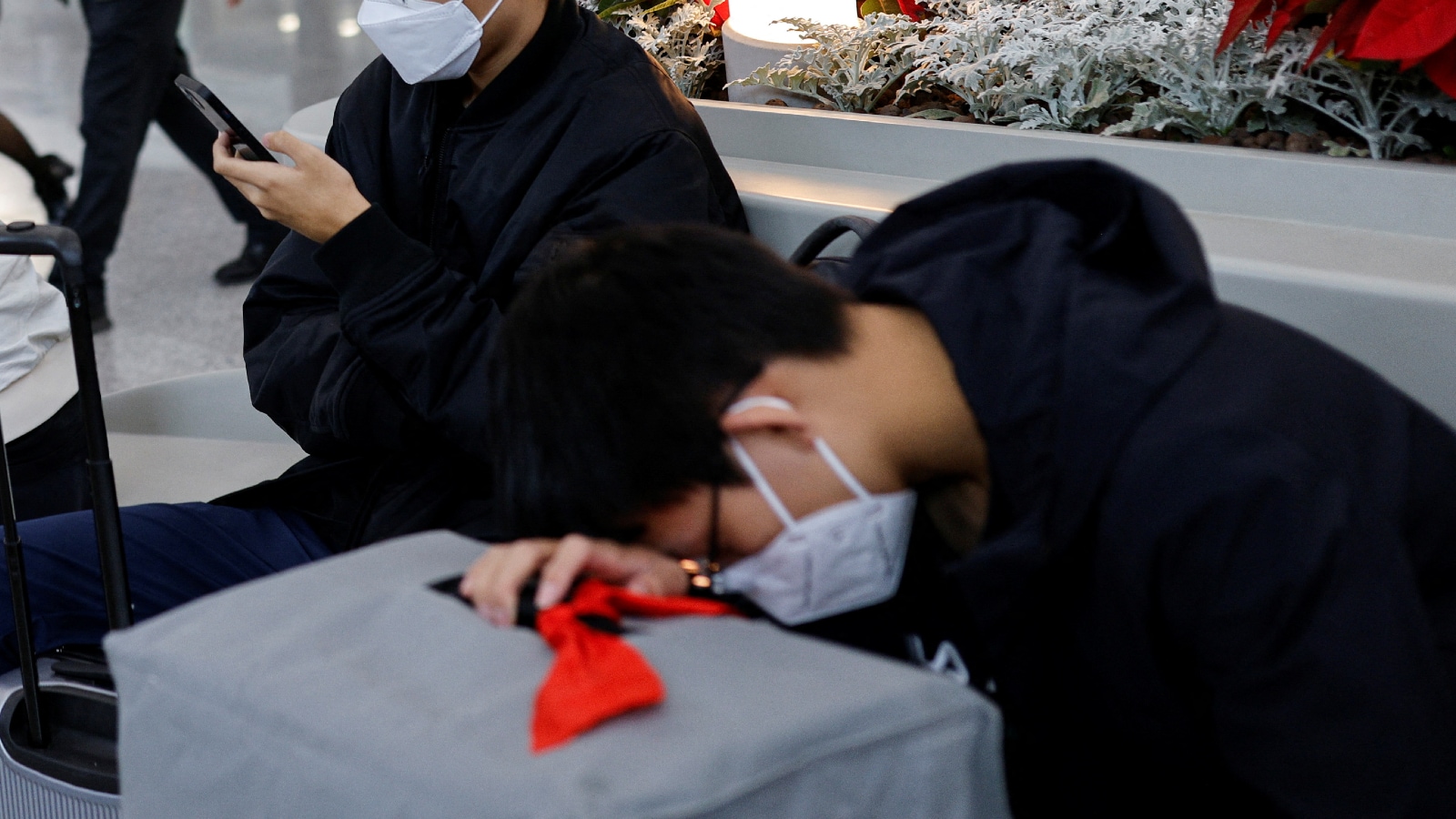Chinese Make Travel Plans as Ban Lifted but Covid Curbs in these Nations to Dampen Mood

Travellers sit at Hong Kong International Airport after the lifting of COVID-19 movement controls in Hong Kong, China (Image: Reuters)
Chinese citizens want to travel abroad to meet relatives living abroad or visit nearby nations for short trips but testing requirements and curbs there could dampen travel mood
China announced it will lift restrictions on outbound travel this week after a period of almost three years. This led to large traffic on Chinese travel websites as Chinese citizens started checking flight tickets, hotel availability and travel packages.
China’s immigration administration said that China will allow people to travel outside the country starting January 8.
The Chinese government also removed quarantine requirements for international arrivals from January 8.
These two moves show that China is now open to the world, three years after it imposed some of the world’s toughest restrictions on its people.
China, which implemented the Covid Zero strategy – where focus lied on eliminating the virus – and subjected people to mass quarantine, mass testing and snap lockdowns, is seeing a major surge in Covid cases as Chinese President Xi Jinping did a u-turn on the policy – which was his most favoured.
The lifting of restrictions came after rare protests but the reopening has led to hundreds of thousands of daily cases, hundreds of deaths and has shook the healthcare system, but without any official acknowledgement as China has changed the system which it followed to count deaths caused by Covid-19.
According to reports by BBC, Reuters and other news agencies, who cited Chinese travel websites, the majority of Chinese people want to visit Macau, Hong Kong, Japan, Thailand and South Korea.
There was also considerable interest in travel to the United States and Australia.
Reuters in its report said that the data from Trip.com showed outgoing flights bookings were up 254% early on Tuesday from the day before.
The report also said that as soon as the news was announced searches for popular cross-border destinations had increased 10-fold.
Macau, Hong Kong, Japan, Thailand and South Korea were the most sought-after, Reuters reported citing data from Ctrip.
However, travel restrictions in some of the countries could dampen the moods of travellers.
Travellers from China to Japan will have to present a negative COVID-19 test upon arrival. Japanese Prime Minister Fumio Kishida said that the country will also limit requests from airlines to increase flights to China.
If any traveller from China tests positive for Covid-19 on arrival, they will be required to quarantine for seven days. The measures will go into effect starting December 30.
The United States is also mulling new coronavirus prevention measures for people travelling from China, according to a report by news agency Bloomberg.
There is no official announcement but people familiar with the developments told the news agency that American officials are concerned about the surge and are unsure regarding the transparency of China’s Covid-19 data.
India announced that travellers returning from China, Japan, South Korea, Hong Kong and Thailand will have to undergo mandatory RT-PCR test and if they test positive they will be put under quarantine.
Malaysia also announced tracking and surveillance measures following the surge in China.
A report by the United Nations shows that China was the largest earner for the global tourism industry before the pandemic.
The UN’s World Tourism Organisation (UNWTO) shows that Chinese tourists spent $254.6 billion overseas in 2019, accounting for almost one-fifth of worldwide tourism spending.
However, despite China’s reopening announcements, major carriers like the United Airlines and Lufthansa are adopting a measured approach and assessing demand before adding more flights.
(with inputs from agencies and SimplyFlying)
Read all the Latest News here
For all the latest world News Click Here

